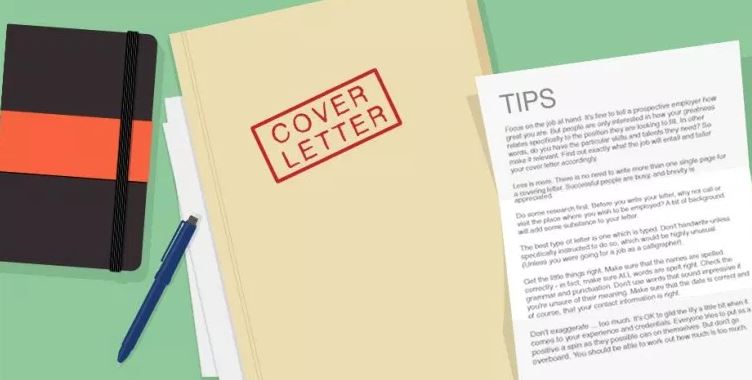Cover letters can be a powerful way to add a compelling narrative about your skills to your job application, but like all things career-related, they need to be done effectively.

A cover letter should never be an afterthought. The goal is for your cover letter to enhance your chances of getting an interview, but when done incorrectly, they have the exact opposite effect!
Here are the top 5 tips for creating a winning cover letter.
1) Tell Me Why You Are The Best Candidate: Cover Letters are written in 1st person, which provides the opportunity to really sell yourself to that company. Hiring managers want to hear that you are the best candidate and the perfect fit for that Company and position, so focus your cover letter on making that specific case, i.e. find the match between your education and past experience and the employer’s specific needs. I advise students to target their cover letters based on what the reader wants to hear. Dedicate a paragraph to a description of what makes that company unique or special, followed immediately by a paragraph that demonstrates that your interests, skills and abilities (just so) happen to be a perfect match for that environment! You can even paraphrase some of the language in the job description to highlight your own skills and experience.
2) Generic Templates: I cannot tell you how many times I have seen generic cover letters sent to multiple companies, where the writer has changed only the relevant contact information. Again, the goal of your cover letter is to describe why you are perfect fit for the specific position and that company. There is no way a generic format can accomplish that. Write an individually tailored cover letter for each job application that describes your qualifications and fit for that position.
3) To Whom It May Concern: One of the quickest ways to ensure that your cover letter and resume are ignored is by including the generic and impersonal “To Whom It May Concern” line. If you can, try to find the name of the hiring manager so you can address him or her specifically. Most companies are very good at hiding that information, so instead of “To Whom It May Concern (or its close cousin, “Dear Sir or Madam”) try to target your cover letter with something more specific and personable like “Dear Hiring Manager” or “Dear Human Resources Professional.”
4) A Warm Lead: If you know someone at that company, reach out to him or her and ask if he would submit your resume and cover letter on your behalf, or at the very least, if you can use his or her name on your cover letter. Companies love internal referrals, so nothing beats a current employee submitting on your behalf. When that is not possible, being able to add a line (with permission) like “Chaim Shapiro, Assistant Director of Career Services at Touro recommended that I apply for this position,” lends credibility and can be a powerful way to get your application noticed and moved to the next level of review.
5) Should I even bother? This may be a bit controversial, but I usually advise students to only include a cover letter when the application requires it specifically. Why? Cover Letters are a powerful tool that can enhance your chances at landing the job but, I have found that most applicants do not take their Cover Letters seriously. Most students do not have 2-3 hours to invest in a targeted cover letter for each of their applications, so they revert to a generic format that ends up doing a lot more harm than good. Do not make that mistake. Write a targeted cover letter for each job, or just let your resume do your talking!
As a recent graduate from Ohio State, I can attest to the importance of choosing the right laptop for college. The options listed here are excellent choices depending on your needs and preferences. Personally, I found my Surface Pro to be incredibly reliable throughout my time at OSU, perfect for taking notes and staying organized. For those looking for a blend of portability and power, the Surface Go 4 seems like a fantastic option, especially with its ability to run desktop apps.